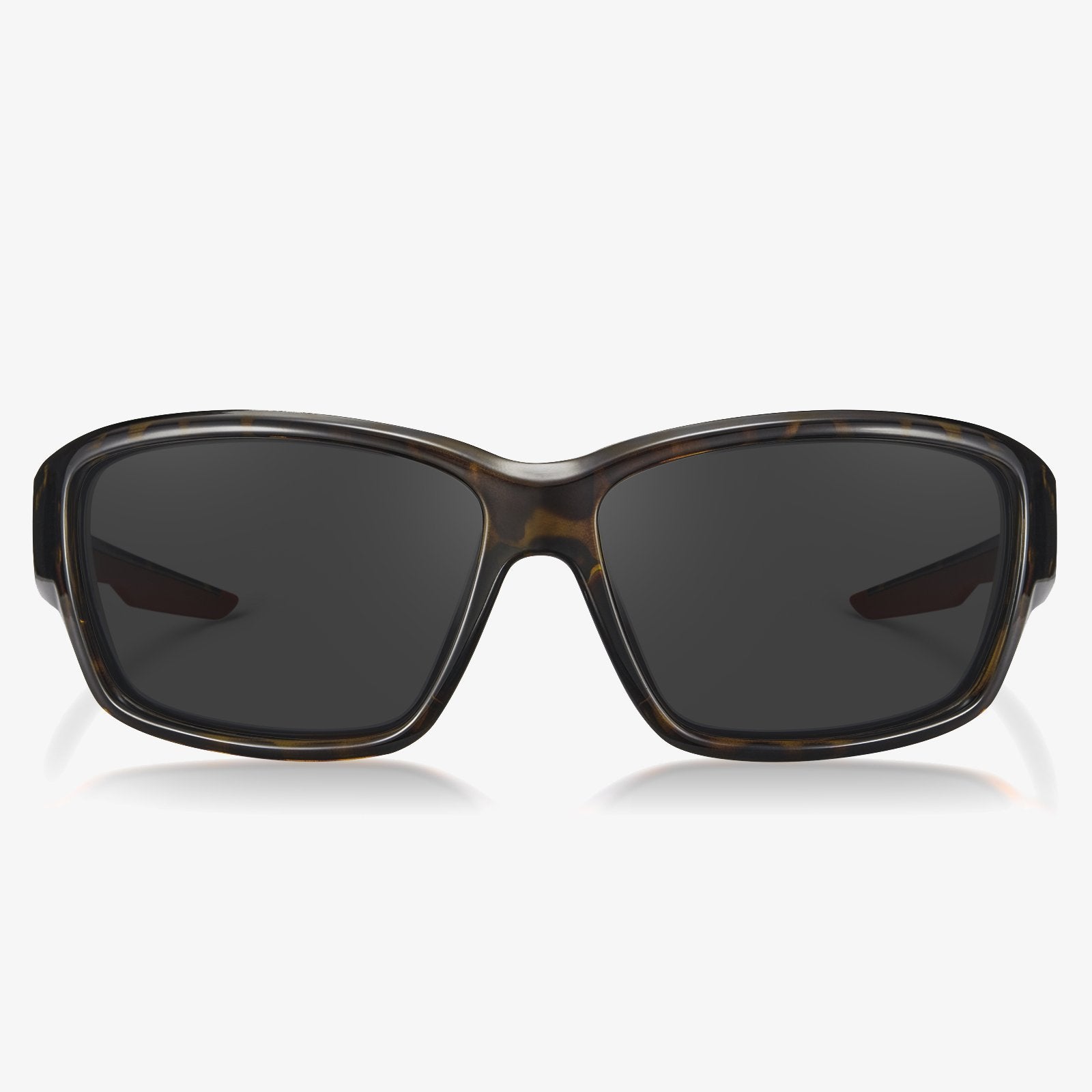How to test a blue-light lens?
Blue-light-blocking lenses are now focused on refractive indices of 1.56 and 1.60. If you buy lenses that are not of either refractive index, be wary. Of course, with the development of technology, now some brands have produced 1.71 refractive indexes blue-light-blocking lenses, suitable for people with high myopia to wear. The true lens package should at least have the product name, refractive index, dispersion coefficient, transmittance, color, SPH, CYL, and other indicators. These indicators are perfect, can be treated as the reference basis of the formal product. In addition, you can go to a professional optical shop or testing institutions for testing.
How to Test Computer Glasses (Clear Glasses)
First, we will show you how to test computer glasses with clear glasses.
1. Ask for Blue Light Glasses Brand Spectrum Report
To find out whether your blue light glasses are the best computer glasses, you should contact the company you bought them from and ask for a spectrum report. It will show you how much blue light your computer glasses can block.
After sending the spectrum report to you, you should make sure that your computer glasses are able to filter at least 30% blue light, otherwise, they are unsafe.
2. Use the Lens Reflection Test
As for how to test computer glasses, you can use the lens reflection test. You can see what color the light is that reflecting off the lenses.
If it reflects the blue light, they are filtering some blue light. If the reflection is violent or purple, the computer glasses may be not effective.
This is a good way for you to perform a blue light test at home.
Step-by-Step Glasses Size Guide
In this section, we will show you how to perform glasses measurements. But the first thing is to know what face shape you have. If you do not know, click here to have a check.
Then you need to know where to find the size measurement of your glasses. In general, you will find numbers that look like this 51-17-145 at the temples of your eyeglasses. Of course, these numbers come at different meanings.
The first number often refers to the lens width. Lens width is the horizontal diameter of the lens at its widest point. In optometry, another term is eye size.
The second number often means the bridge width. Bridge width is the part that joins the two lenses and sits over the nose. Some refer to this as the gap. The bridge width varies between 14 and 24 millimeters.
The third number often means the temple length. The temple is the arm that keeps the sunglasses on your face. That arm extends to the part that hangs on the ears. The length is usually 135, 140, or 145 millimeters.
Lens height measures the size of the lens vertically, that is from the top to the bottom of the lens. Although sizes may differ depending on the brand, the standard size is somewhere between 32 and 38 millimeters.
How To Choose Better Night Driving Glasses?
Driving at night has a high accident rate because of poor visibility, blinding headlights, and fatigue. Now the market exists a few main glasses: sunglasses polarizing lenses, Glasses that use or mimic the first generation of patented technology. So how do you compare the options between driving and wearing glasses?
Night driving lens is relatively special compared with daily driving lens, not only to prevent strong light and see the road more clearly. According to the national motor vehicle driver special glasses standards, QBT 2659-2004 daily light transmittance should be more than 8%, night light transmittance should be more than 75%. Be sure to consult customer service. Ask about the situation. Note that a pair of polarized sunglasses are not suitable for use at night, and the light transmittance must reach the national safety standards.
What are blue light blocking glasses?
As we now spend more and more time on the screen, it is particularly important to pay attention to the effects of blue light. Approximately six out of ten adults will experience digital eye fatigue after using the device for more than 2 hours. Symptoms of digital eye fatigue include headaches, blurred vision, and dry eyes. The technology of blue light blocking glasses can effectively block part of the blue light damage to the eyes, reduce the visual fatigue caused by staring at the electronic screen for a long time and can also reduce the radiation and damage of ultraviolet rays to the eyes. However, the most important thing for eye protection is development. Good eye use habits, close your eyes regularly, and let your eyes rest.
Blue light blocking glasses are glasses that the manufacturer claims can filter out blue light. The lens of this kind of glasses has filter material or surface coating, which can block part of the blue light. People who believe that their eye and vision are damaged by blue light exposure may wear them to reduce blue light exposure.
Blue light is a short-wave blue light in the color spectrum visible to the human eye. Its wavelength is in the blue part of the electromagnetic spectrum, roughly 400–500 nanometers. Researchers believe that peak light damage occurs at approximately 440 nanometers. Computers, laptops, tablets, smartphones, and general lighting can all expose the eyes to blue light.
What is an MR lens?
MR is the brand name of optical lens raw materials produced by Mitsui Chemicals in Japan. MR series is available in three different refractive indices (1.60, 1.67, 1.74): MR-7, MR-8, MR-10, and MR-174. MR-7 and MR-10 have higher thermal deformation temperature and excellent dyeing, which are widely used in the field of sunglasses. MR-8 has the most balanced performance index and is suitable for the production of lenses of any strength. It has the highest market share in lens materials with a refractive index of 1.60. MR-174 is a high refractive index lens material, which is mainly used in the production of ultra-thin lenses.
Method of wearing the contact lens
Wash your hands before putting on contact lenses, and be careful not to leave long nails, to avoid contamination of the lens by bacteria and nail scratches. Place the contact lens on the tip of your index finger, face-up, and pull your upper and lower eyelids apart with the middle fingers of both hands. Look straight ahead and place the lens gently into the eye (attached to the cornea). Remove the index finger and look down so that the lens is attached to the cornea, and slowly relax the eyelids with the middle fingers of both hands. Blink gently several times (or roll your eyes) to remove bubbles.











































